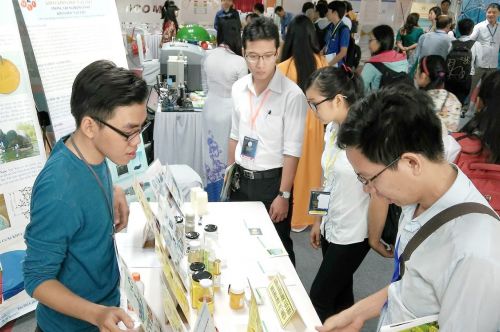Vietnam seeks Indian investment in all sectors

While Vietnam has been cynosure of all eyes following its dispute with China over the latter’s claim in East Sea, few would have noticed its recent economic growth and market opportunities that it presents. This growth has been based on foreign direct investment (FDI) and Hanoi has been keen to invite Indian investors to do business in the country as enunciated by Vietnam’s PM during his trip to Delhi last month.
Vietnam’s GDP grew 5.62% in the first nine months of 2014. The performance of the economy has also been supported by investment in the manufacturing sector, which remains the most significant sector for foreign investment, accounting for almost 70% of total FDI. Textile and garments, chemicals, agriculture and fishery are the sectors where Vietnam has sought India’s investments, Indian government sources informed ET.
Vietnam has also been looking forward to Indian investment in new business sectors where India has advantages – infrastructure and power generation and distribution, IT, education and pharmaceutical research, according to official sources. The present two way trade was $8.0 billion in 2013-14 and the two countries have targeted 15.0 billion before 2020. The two countries are contemplating to conclude the Preferential Trade Agreement (PTA) to reduce more custom tariff.
The Republic of Korea has overtaken Japan as the biggest foreign investor. Samsung has invested nearly $8 billion in Vietnam while Lotte Mart plans to double its current number of stores to 2020. Besides manufacturing, the real estate sector is ranked second in FDI, accounting for 11%, equivalent to $1.2 billion.
Currently there several large real estate projects, including Smart Complex by Lotte in HCM City’s Thu Thiem Area ($2 billion) and Amata City Long Thanh from Amata in Dong Nai province ($530 million) have been undertaken in Vietnam where Indian investors could explore to invest, sources in Vietnamese government said.
Vietnam’s stock market has been among five markets with the strongest growth in the world. Vietnam has also quickly recovered from the impacts of the financial crisis in 2008-09 and over the last four years, the Vietnamese government successfully made use of macroeconomic stabilisation policy, thus keeping a high economic growth at 5-6% per year, attracting $23 billion in foreign direct investment (FDI) in 2013, contributing to promoting the national economic development.
Vietnam has developed into one of the leading investment destinations in ASEAN and one of the top three ASEAN exporters to the US, ahead of Thailand and Malaysia. Vietnam accounts for 20% of ASEAN exports to the US, and if the present trend continues, it would have a market share of more than 30% by 2020.
The Vietnamese economy has gradually stabilized, with macro-economic indicators improving as against that in 2013. This positive outcome has been attributed to the proper formulation of macro-economic policies by the Government of Vietnam. In the first nine months of 2014, the number of households living below the poverty line has reduced by 21.7% compared to the same period of the previous year.
The US Chamber of Commerce in Singapore has claimed that Vietnam is the second most popular destination for US business expansion among the member states of the (ASEAN), stating that Vietnam’s participation in negotiations to become RCEP and TPP membership would have a positive impact on investment activities by U.S enterprises in Vietnam. Vietnam accounts for 20% of ASEAN exports to the US and if present trends continue, it would have a market share of more than 30% by 2020. The country could achieve a growth rate of 6% in 2015 and then gain up to 6-7% in the period 2016-2017. Its inflation rate has dropped from over 20% in 2010 and 2011 to only 6% in 2013.


